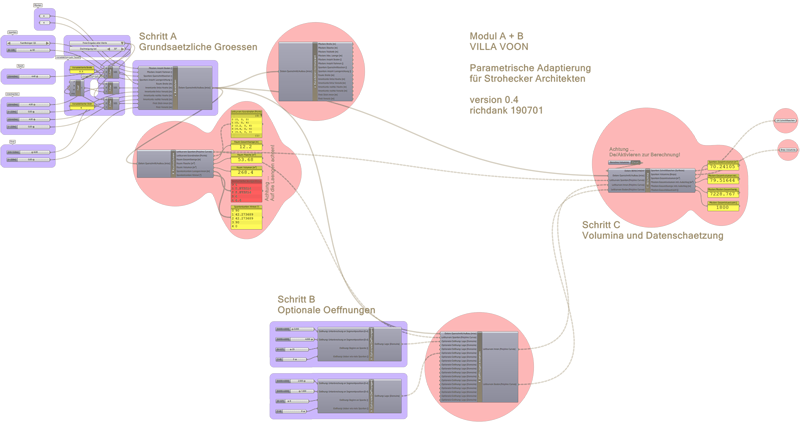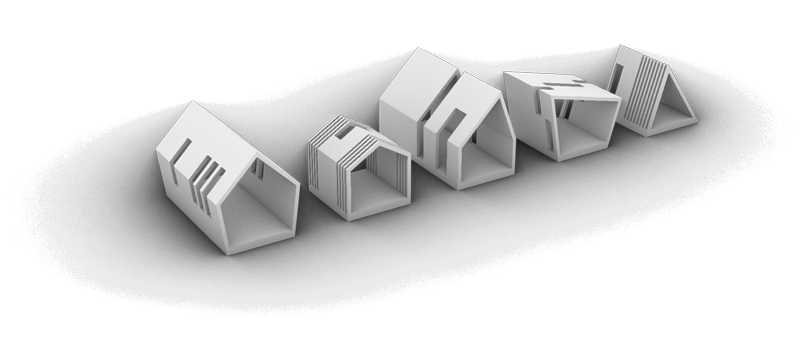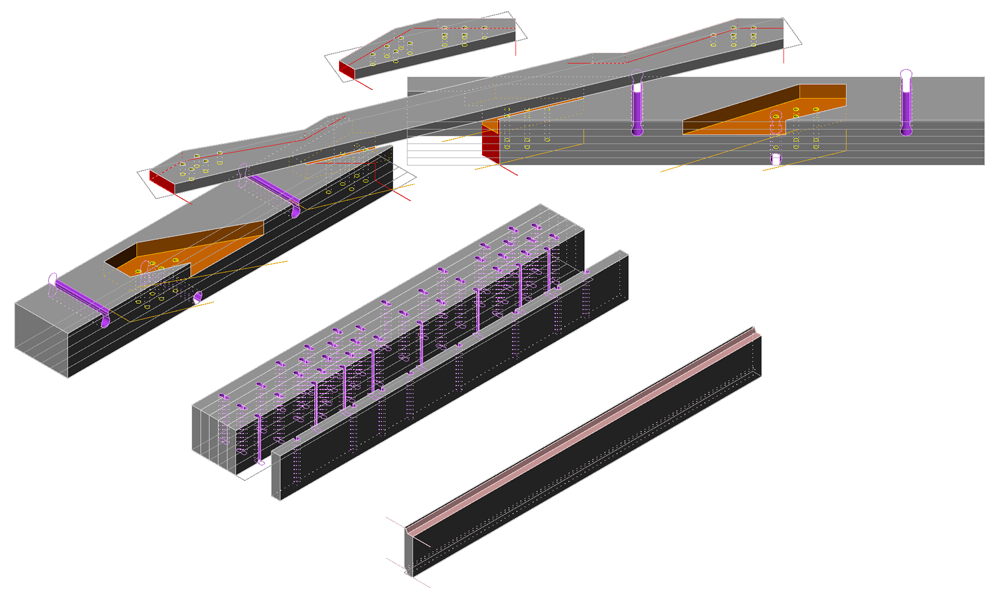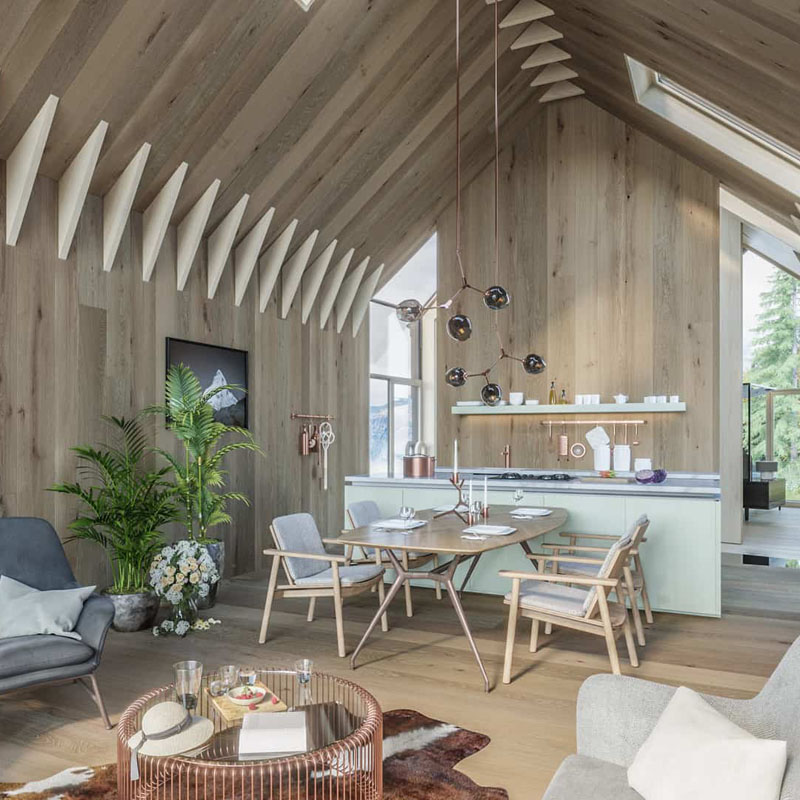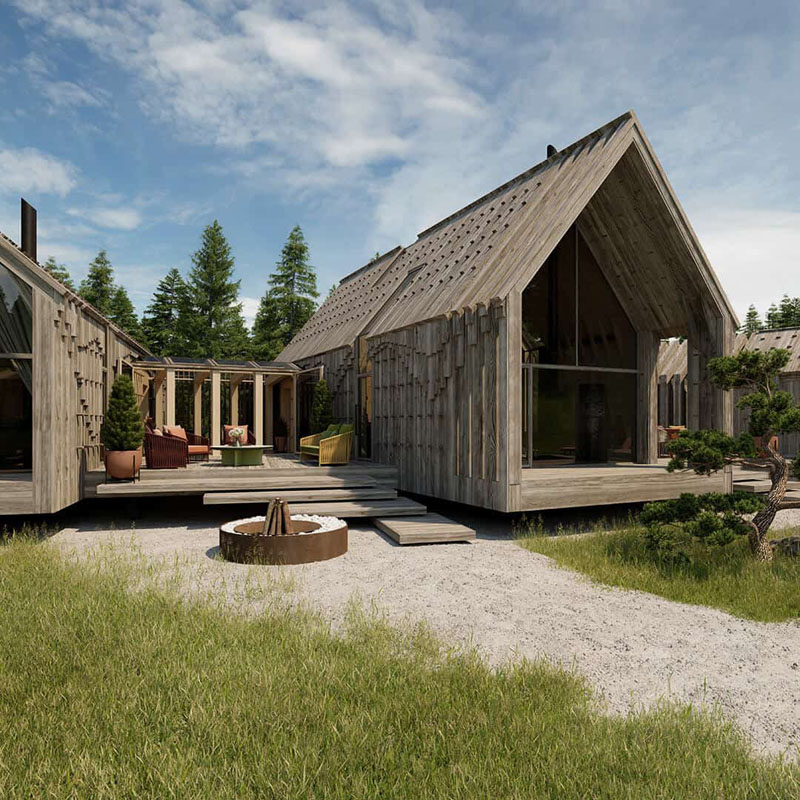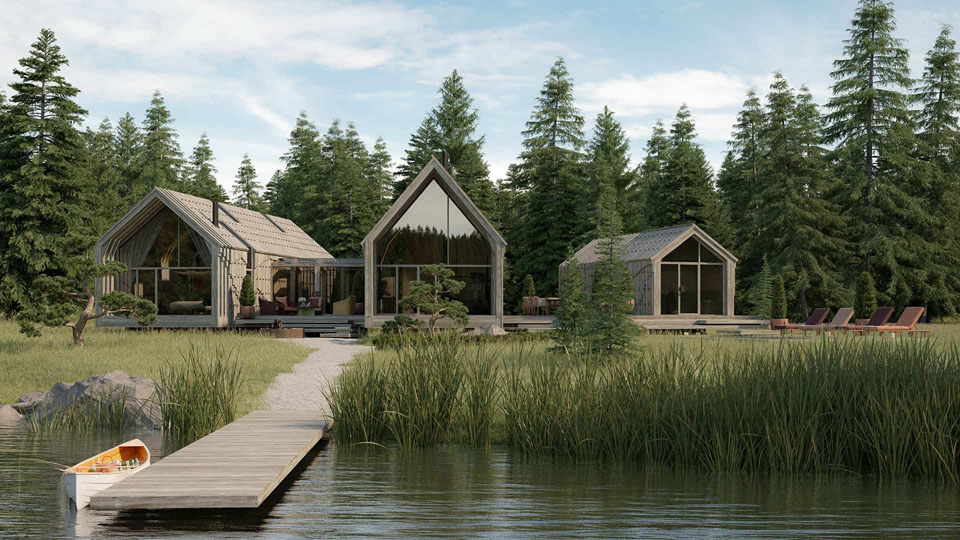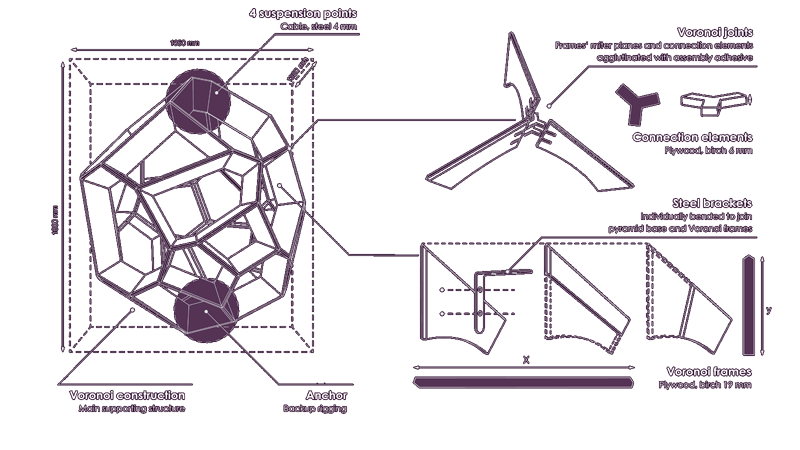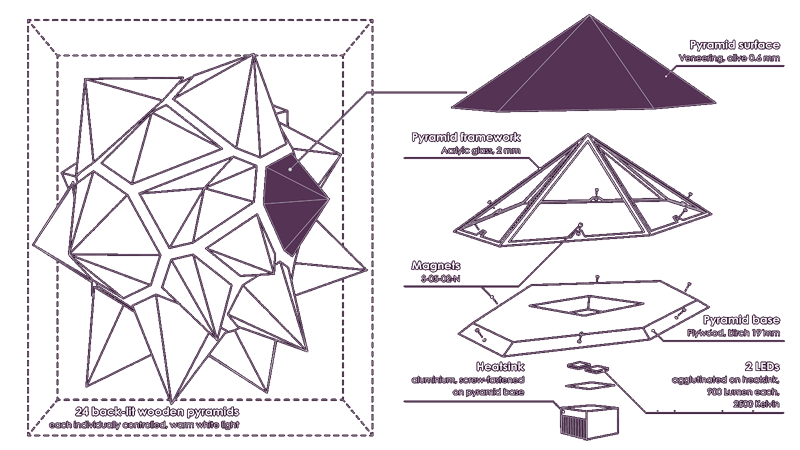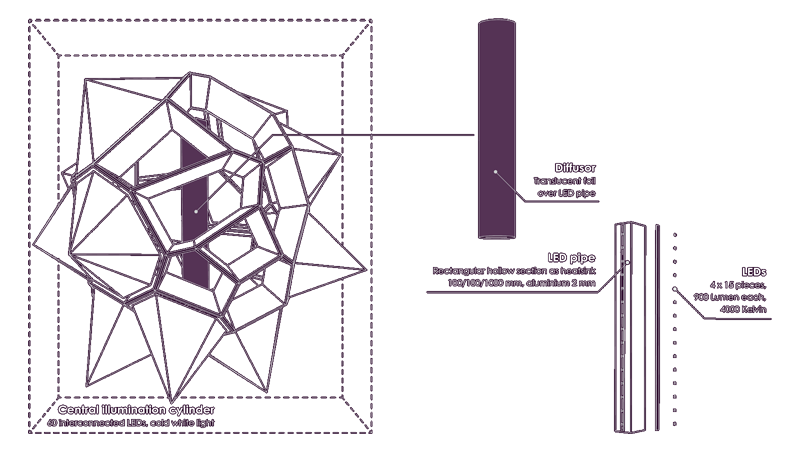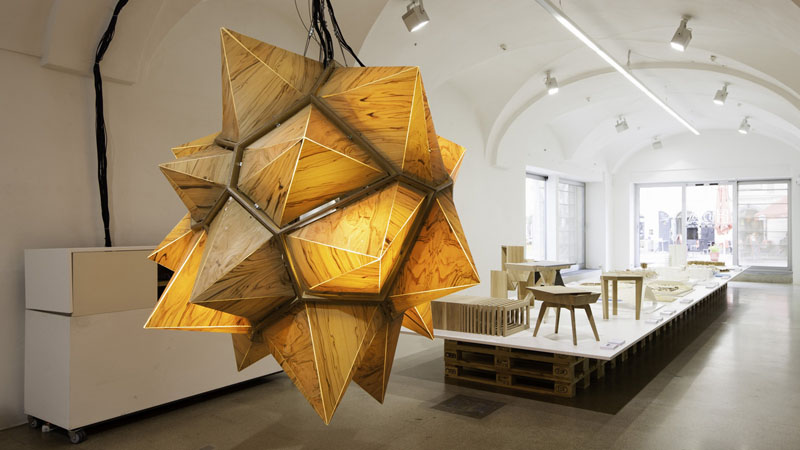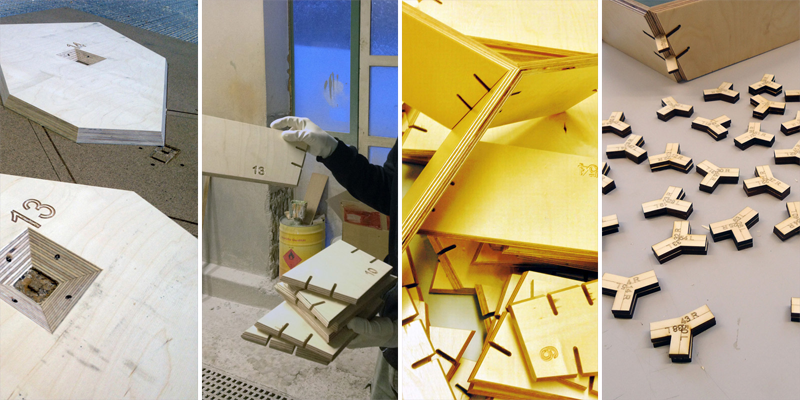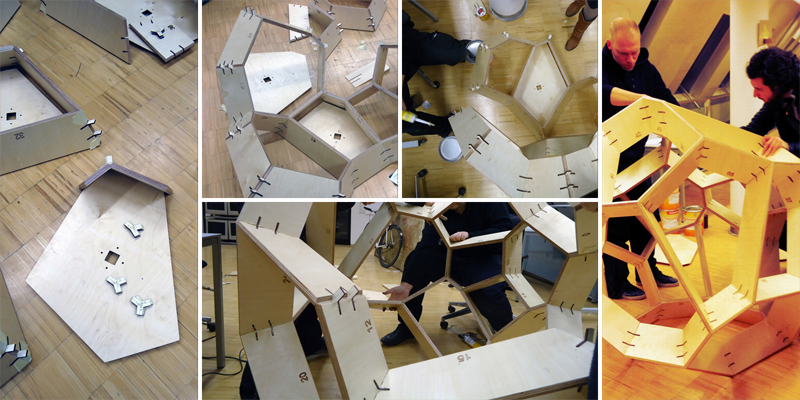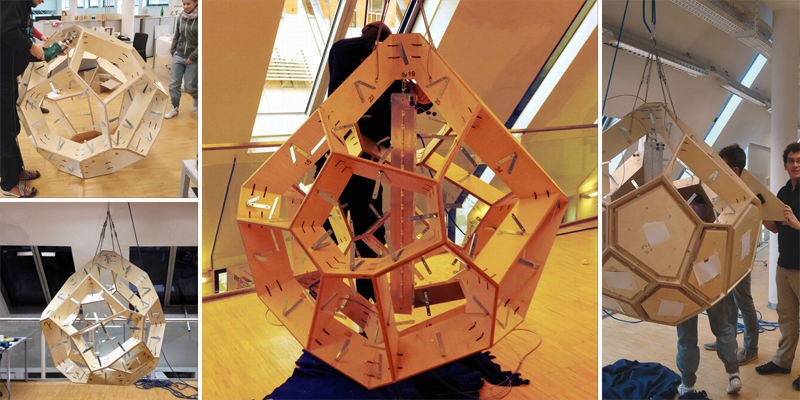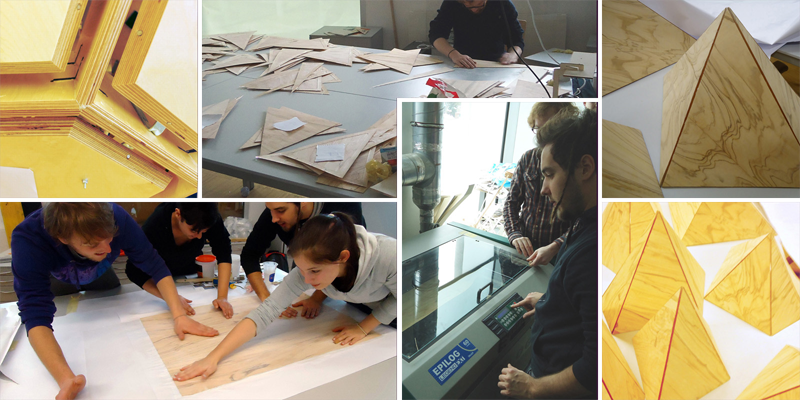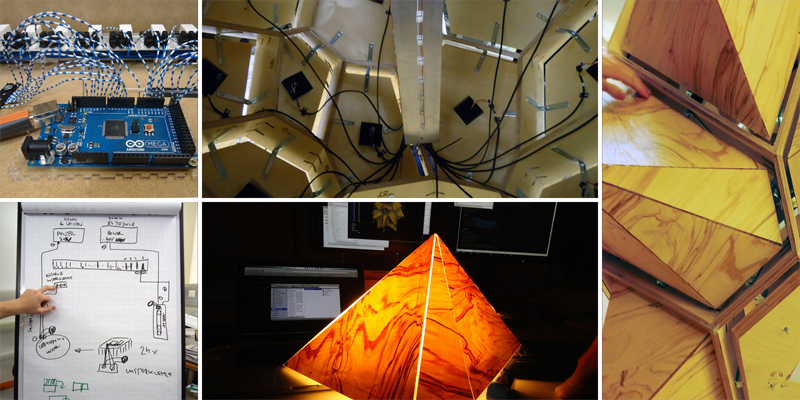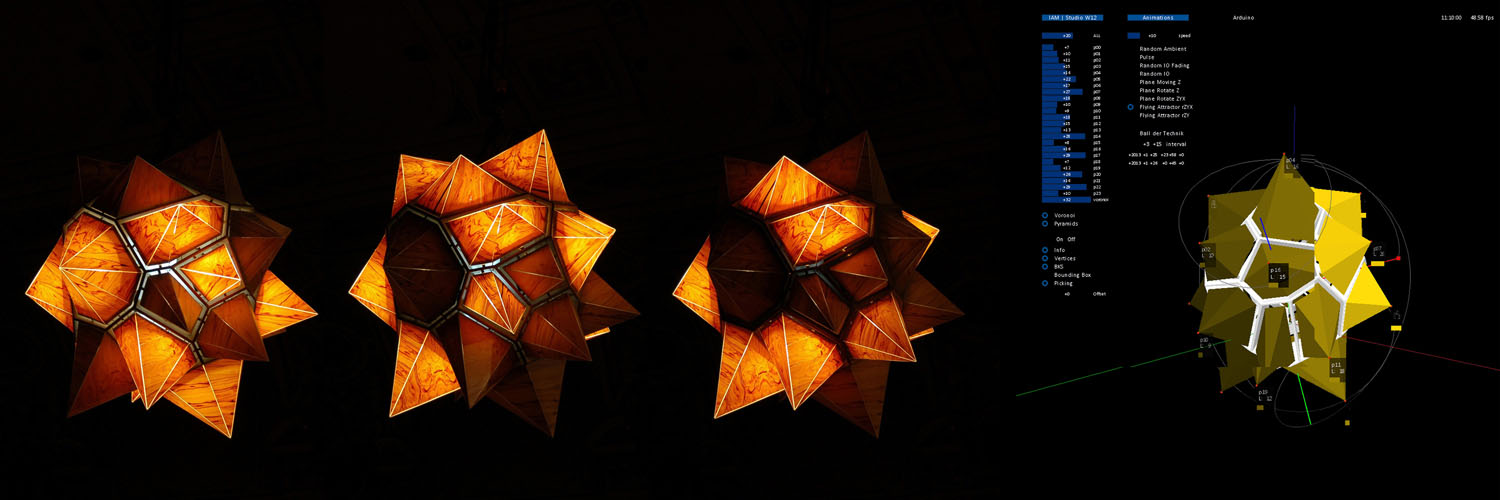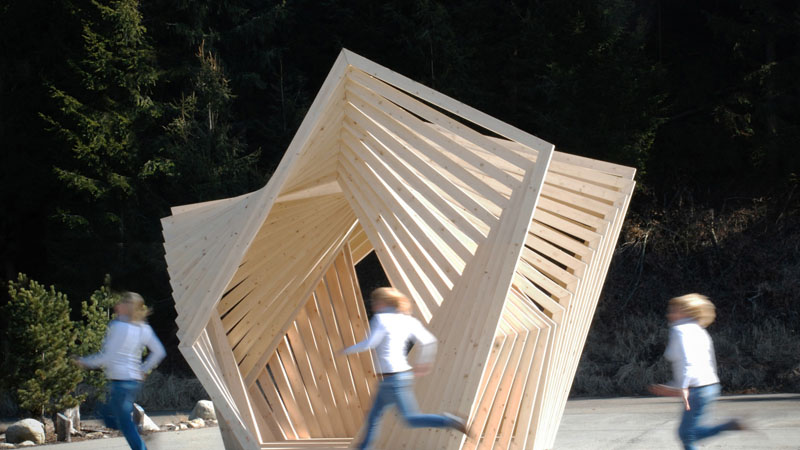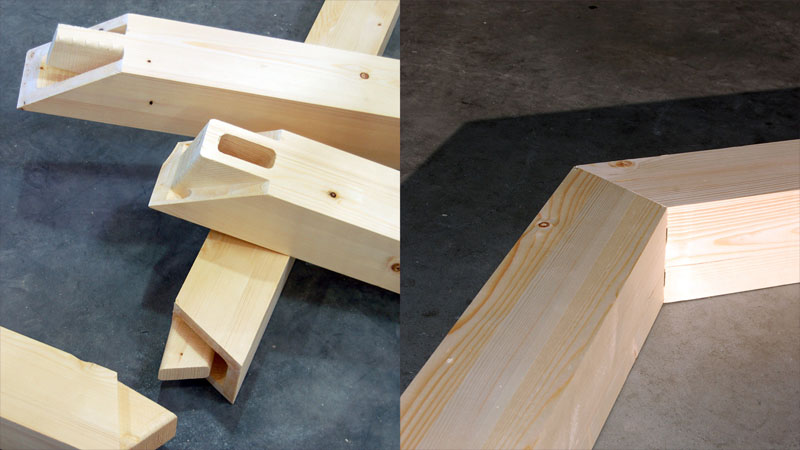Architectural designs usually go through a variety of iterations. Beyond that, many external experts are to be consulted in the implementation phase, with their very own specifications and goals. To merge all data into ONE optimized model would be an efficient way: a complete parametric original. From the computer directly into realization!
Some paradigmatic CAD/CAM applications shall be shown here in this brief overview. They were developed in different constellations. The links provided lead to further details and full credits. For a complete list of works, please refer to richdank - the complete story.
The basic element of this timber construction system is a single raw plank. After parametrically controlled shaping by CNC machinery, those are interlocked with joint profiles from hardwood to form a beam - without any glue or metal at all. Finally, they are joined to frames or ribs, a process that deliberately borrows from shipbuilding.
This results in very individual shapes that make every Villa Voon something unique - from straight to sloping walls, from sleek to layered facades, from simple to multi-pitched roof shapes. The design possibilities in the custom-programmed configurator are virtually unlimited.
This modular plug-in system, conceived by Strohecker Architects, is not only patented, but has also won multiple awards. The constructive concept and digital fabrication has been supervised by Richard Dank from the very beginning and is constantly being expanded. Module A serves as a design tool for the architectural team. Module B generates all the individual construction elements - every plank, every bracing, every fastener, etc. And in module C, the digital design data is finally turned into machining code for production.
A building in harmony with its own nature, where centuries-old traditions meet state-of-the-art manufacturing technology.
Pallantis
Algorithmic Chandalier
2012/13
The aim of the Master Design Studio Kronleuchter at the Institute of Architecture and Media was to design an object that utilises contemporary CNC fabrication principles and takes advantage of the manifold features of the material wood. Moreover, the options of today's LED technology and its capability of being digitally controlled should fundamentally influence the approach. The concept proposed by bildermehr.at had to be fully parametric in design and production as well as interactively operable. To put it briefly, the assignment targeted the question whether an out-of-the-ordinary chandelier could be produced solely in wood.
See the short video taken at the Ball der Technik 2013 to experience the outcome: Pallantis.
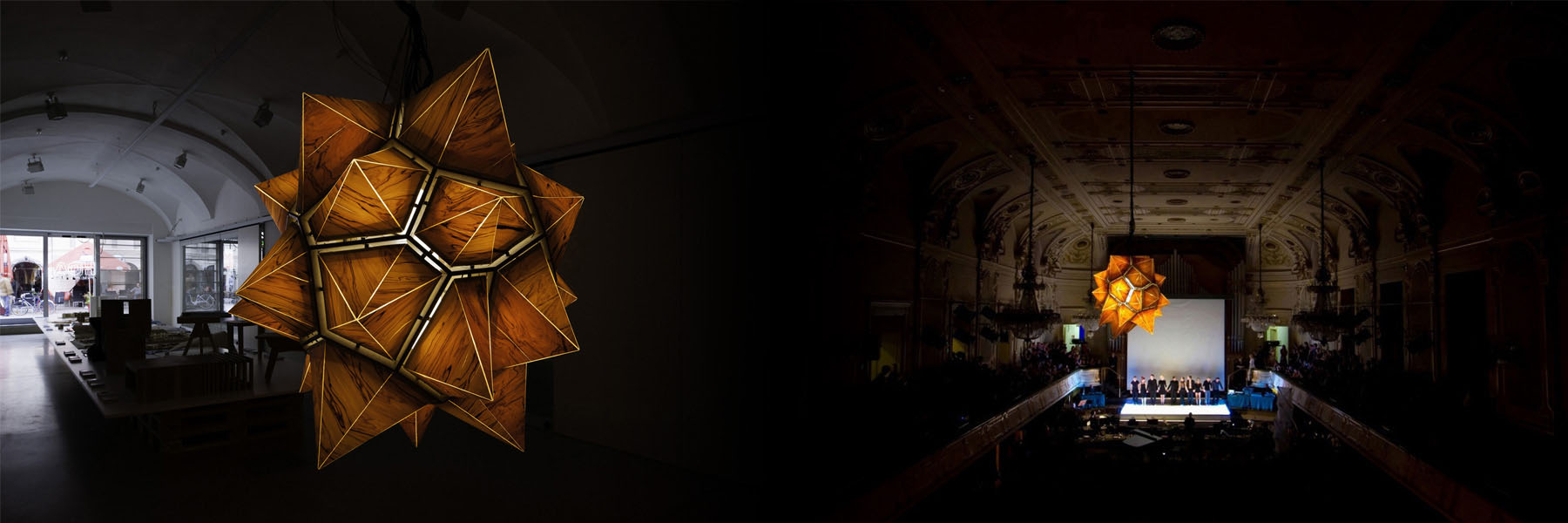
The Algorithmic Chandelier lighting up the 25 year anniversary of the House of Architecture (left) and the Stefaniensaal at Congress Graz (right).
From top left to bottom right:
Images from the CNC production of the pyramid base planes, the 3D-Voronoi-frames and the connection elements.
Assembling the cocoon.
Fixing the steel brackets and the suspension, mounting the central illumination cylinder and attaching the pyramid bases.
The production of the translucent olive veneer pyramids.
Arduino board and wiring within, testing the application and close-up of the pyramids snapped on.
The Framed Pavilion
Parametrics/Joints constructed/designed by/in robots/wood
2012
A structure and all joints solely made from timber. No glue or other fasteners or fixings allowed. For the realization use the capabilities of a 6-axes robot on an additional linear axis. Moreover the entire project must be applied parametrically! Is that possible?
Start to analyze existing and traditional wood joints and test their possibilities in order to transform them into digital models. Next step is to improve those designs in consideration of producing all joints within the milling environment. With this data, start to design and simulate a walk-in structure.
The experiments concluded with 18 individual full-scale algorithmic projects - and one completely implemented and built structure: The Framed Pavilion. The original design intention of was to build irregular pentagonal frames mutating along an axis. The implemented algorithmic process enables the user to convert any basic surface that seems appealing. The application assists to meet the restrictive parameters such as the positioning of the wooden dowels, the minimum and maximum beam length and joint angles. Thereby it was possible to generate a morphing shape between the interior and the exterior where height variations, gaps and openings define a special ambiance.
